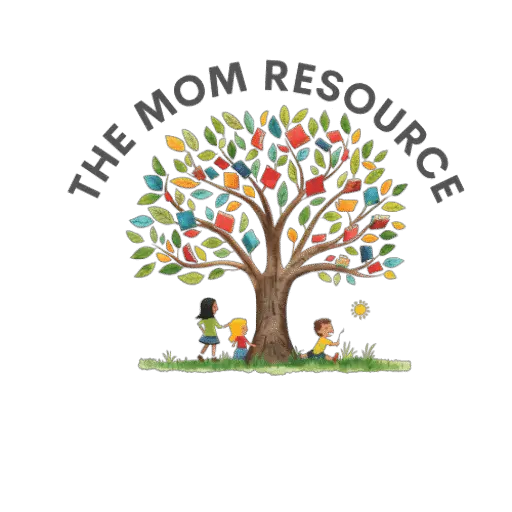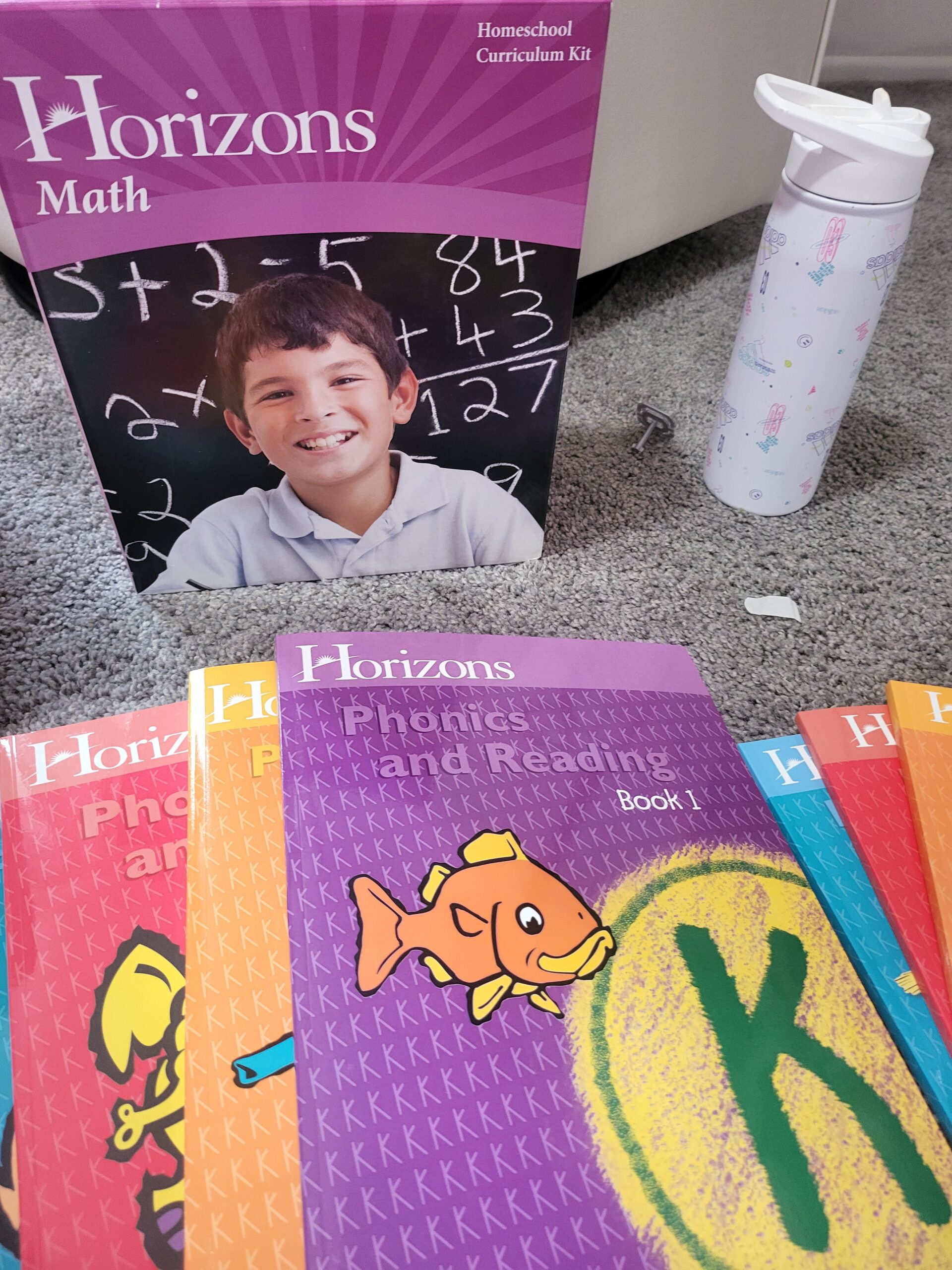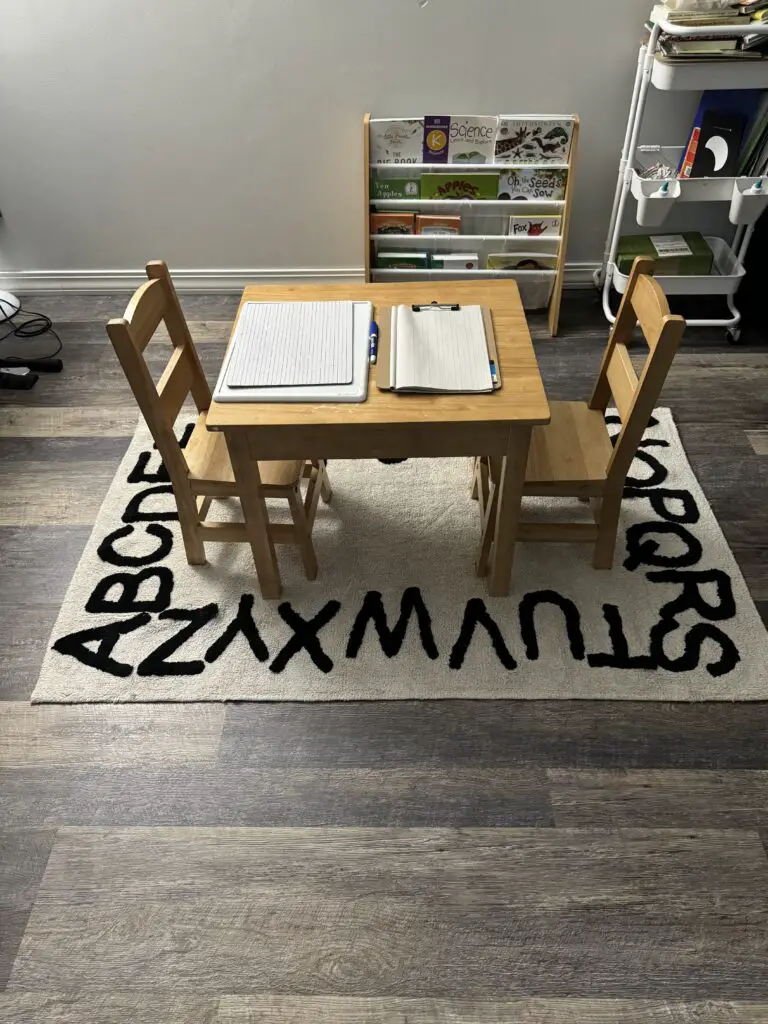Easiest Homeschool Method for Working Moms: Simple Approaches That Actually Work
Homeschooling Doesn’t Have to Be Hard
Let me tell you about my breaking point. It was 10 PM on a Tuesday, and I was still cutting out laminated cards for the next day’s history lesson while my kids slept peacefully upstairs. I’d spent three hours that evening preparing materials, creating activities, and organizing supplies. And this wasn’t unusual! I was spending nearly 5 hours weekly on homeschool prep alone, not counting actual teaching time!
Something had to change. Here’s what nobody tells you when you start homeschooling: the most elaborate, Pinterest-worthy methods aren’t the most effective ones. Research shows that homeschooled students perform equally well across different all the different teaching methods. The secret isn’t WHAT you teach, but the consistency and one-on-one attention you provide.
The easiest homeschool method is the one you’ll actually stick with long-term without burning out. It’s the approach that fits your real life, not some idealized version where you have unlimited time, energy, and patience. After years of overcomplicating everything and watching countless families quit homeschooling from exhaustion, I’ve identified the genuinely simple methods that produce excellent results without destroying your sanity.
In this guide, I’ll break down the easiest homeschool method, explaining what makes them simple, who they work best for, and how to implement them starting tomorrow.
Whether you’re a working parent, juggling multiple kids, dealing with a busy season, or just tired of feeling overwhelmed, there’s an easy method here that will work for your family.
Ready to simplify your homeschool life? Let’s go!
What Makes a Homeschool Method “Easy”
Before diving into specific methods, let’s define what “easy” actually means in homeschooling context. Easy doesn’t mean your kids aren’t learning, it means YOU aren’t drowning in preparation and planning.
- Minimal daily preparation required from the parent
- Clear instructions eliminating guesswork about what to teach
- Built-in structure providing automatic planning and scope-sequence
- Low material requirements reducing shopping and organizing needs
- Independent student work when age-appropriate
- Flexible pacing allowing adjustment without major replanning
An easy homeschool method requires less than 30 minutes of parent prep daily, and ideally even less. You should be able to open your materials in the morning and know exactly what to do without extensive planning the night before. I spent my first year doing elaborate unit studies that required hours of research, material gathering, and activity creation. The kids learned, sure, but I was exhausted.
Easy methods have detailed teacher guides or video instruction that walks you through lessons step-by-step. You’re not figuring out how to explain concepts or creating teaching materials from scratch. When I switched to a curriculum with scripted lessons, my stress levels dropped dramatically. Following someone else’s teaching plan felt less creative, but it was infinitely more sustainable.
The method should have built-in structure and a clear scope and sequence showing what to teach when. You’re not piecing together random resources or worrying about gaps in your child’s education. The planning is done for you. This doesn’t mean rigid schedules, but it does mean systematic progression through skills and knowledge.
Low material requirements matter more than people realize. Methods requiring extensive supplies, special manipulatives, or constant trips to purchase materials add hidden work and stress. The easiest methods use books, basic supplies, and items you already have at home. I’ve done elaborate science experiments that required specialty ingredients from three different stores…not easy, not sustainable, and not worth it, unless it’s genuinely engaging for everyone.
For older students, methods incorporating independent work give you breathing room to help younger children or accomplish other tasks. Not every method needs constant parent presence for every subject.
All-in-One Online Programs: The Ultimate Easy Method
Online homeschool programs represent the easiest approach for most families, handling teaching, grading, and record-keeping automatically while you supervise rather than teach every concept yourself.
- Automated instruction through video lessons and interactive activities
- Self-grading assignments eliminating hours of correction work
- Built-in progress tracking showing exactly what’s been completed
- Professional lesson planning done by curriculum experts
- Minimal parent involvement required for most subjects
- Accessible anywhere with internet connection
Time4Learning is hands-down the easiest complete homeschool solution I’ve encountered. This online program teaches every core subject through interactive lessons and activities designed like educational games.
Your job is simply ensuring your child logs in and completes the assigned work. Everything else like teaching, grading, and tracking progress, happens automatically. The parent dashboard shows exactly what your child has accomplished, how long they spent on each activity, and which concepts need review.
The main consideration is screen time. Students spend 2-3 hours daily on the computer for core subjects. You can balance this with afternoon outdoor time, hands-on projects, and reading physical books. Another thing to consider, is that some kids find the pace too slow or too fast, since the program moves systematically through concepts. Luckily, you can adjust grade levels for individual subjects.
Power Homeschool (formerly Acellus) offers another completely automated option with video lessons and interactive exercises across all subjects. The program is affordable, provides official transcripts, and requires virtually no parent teaching. Students work independently at their own pace while the program tracks everything. Some lessons even include quirky teaching approaches that make concepts memorable.
Khan Academy provides completely free video instruction and practice problems, primarily for math and science. While not a complete curriculum by itself, Khan Academy makes teaching these traditionally difficult subjects incredibly easy.
Outschool takes a different approach, connecting students with live online teachers for classes on every imaginable subject. If you’re uncomfortable teaching certain topics, like high school chemistry or creative writing, you can outsource those classes to expert teachers.
The beauty of online programs is flexibility combined with structure. You’re not creating lesson plans or gathering materials, but you’re also not locked into rigid schedules. Most programs let students work at their own pace, repeating concepts until mastered or accelerating through familiar material. This adaptive learning is nearly impossible to provide with traditional methods.
Unschooling and Child-Led Learning: Easy Through Interest
Unschooling might seem counterintuitive on a list of easy methods, but hear me out! Following your child’s interests eliminates resistance, planning stress, and curriculum costs while producing enthusiastic learners.
- No formal curriculum to purchase or plan
- Child’s interests drive learning making motivation automatic
- Real-world experiences replace manufactured activities
- Natural consequences teach without parent enforcement
- Minimal structure reducing planning and scheduling stress
- Learning happens everywhere not just during designated school time
Unschooling gets misunderstood as “not schooling” when it’s actually intentional learning through life experiences, interests, and natural curiosity. Instead of forcing prescribed curriculum, you facilitate learning opportunities around whatever fascinates your child.
The easiest aspect of unschooling is eliminating the daily battle of forcing kids through lessons they resist. When children learn about topics they’re genuinely curious about, motivation is built-in. I’m not saying every learning moment is joyful, even passionate interests involve hard work, but the overall resistance drops dramatically compared to mandated curriculum.
Unschooling requires a significant mindset shift for most parents. You’re trusting that children will learn what they need when they’re developmentally ready, rather than following grade-level expectations. This approach terrifies many people, understandably!
The practical side of unschooling is straightforward: provide a rich environment with books, materials, experiences, and opportunities. Answer questions, facilitate access to information and experts, take them places, and let curiosity lead. We keep our home stocked with diverse books, art supplies, building materials, science equipment, and musical instruments. Although unschooling is our regular homeschool method, when interest strikes, resources are available.
Critics worry about gaps in unschooled education, and that’s a valid concern. True unschoolers argue that motivated learning sticks better than forced learning, so even if topics are encountered later, they’re learned more deeply. Some families practice “relaxed homeschooling”, which is a middle ground where they ensure basic skills like reading, writing, and math are covered systematically while everything else follows interest. This hybrid feels less risky while maintaining most of unschooling’s ease.
Unschooling works best for certain family types: parents who are naturally facilitators rather than teachers, families who value autonomy and trust, households without strong pressure about grade-level performance, and honestly, parents who enjoy watching their kids pursue passions more than checking off curriculum boxes. It’s not for everyone, but for families it fits, unschooling is remarkably easy and joyful.
Unit Studies: Teaching Multiple Kids with One Topic
Unit studies integrate multiple subjects around a central theme, making planning simpler while allowing you to teach different ages together with adjusted complexity.
- One topic covers multiple subjects reducing separate planning
- All ages learn together with assignments adjusted by ability
- Natural subject integration mirrors real-world learning
- Interest-based themes increase engagement automatically
- Flexible duration from one week to several months
- Heavy use of library books reducing curriculum costs
Unit studies simplify multi-age teaching dramatically. When studying ancient Egypt, for example, everyone learns about the same civilization but at different levels. Your kindergartner colors pyramids and hears stories about pharaohs while your fourth grader writes reports about mummification and your seventh grader analyzes political structures. You’re teaching one topic instead of juggling different subjects for each child and that’s huge for time management!
The planning is more upfront than ongoing. You spend a few hours (or use pre-planned unit studies) organizing the overall topic, gathering resources, and outlining activities. Then you simply follow that plan for the next few weeks. Compared to planning separate lessons daily for multiple subjects and multiple children, unit studies are wonderfully streamlined.
Pre-planned unit studies make this approach even easier. Companies like KONOS, Tapestry of Grace, and Five in a Row provide complete unit study curricula with everything planned for you. You’re still teaching multiple kids together around shared themes, but someone else did the heavy planning work.
Creating your own unit studies takes more work initially, but allows perfect customization to your kids’ interests. The easiest unit studies use library books as the primary resource.
Pick a topic, search your library’s catalog, check out fifteen books at various reading levels, and you’ve got your curriculum. Add a few hands-on activities or field trips, and you’re done. I’ve created entire months of education spending zero dollars on curriculum, just library cards and creativity.
Unit studies work beautifully for families who enjoy going deep rather than covering material systematically. The potential downside is gaps. If you never get interested in chemistry or never study certain historical periods, those topics might not get covered. Some families address this by using systematic curriculum for core skills (math, reading, writing), while doing unit studies for everything else.
Charlotte Mason Method: Simple Living Books Approach
Charlotte Mason’s educational philosophy sounds fancy but is actually remarkably simple. Replace textbooks with engaging “living books” written by passionate authors, keep lessons short, and incorporate nature study and art appreciation.
- Living books instead of textbooks making learning naturally engaging
- Short lessons preventing both student and teacher fatigue
- Narration instead of tests eliminating grading work
- Nature study using your backyard or local park
- Copywork and dictation for multiple language arts skills simultaneously
- Habit training replacing constant discipline battles
The core of Charlotte Mason is using well-written, engaging books instead of dry textbooks. Instead of reading encyclopedia entries about the Revolutionary War, you read historical fiction and biographies that bring that era alive. These living books naturally engage students, reducing the motivation battles that come with boring textbooks. And they’re available at your library, no expensive curriculum required!
Short lessons prevent everyone from burning out. Charlotte Mason recommended 15-20 minute lessons for young children, gradually increasing to 45 minutes for older students. This concentrated attention on one subject at a time actually produces better results than long, wandering lessons. When I switched to shorter lessons with more focused attention, my kids retained information better and I had energy left at the end of the day.
Narration and having students tell back what they’ve learned in their own words, replaces written tests and worksheets. This eliminates hours of grading while actually assessing understanding more effectively than multiple-choice tests. After reading a chapter, I simply ask “Tell me about what we just read.” Their narration shows me exactly what they understood and what needs clarification. No papers to grade, no tests to create. So easy!
Nature study sounds elaborate but literally means going outside and observing nature. We take weekly nature walks where the kids sketch something interesting and maybe collect specimens to identify later. This counts as science, provides exercise, and gives me a break from active teaching. Some of our best nature study has happened spontaneously when my son discovered an interesting bug or bird’s nest during regular play time.
Copywork and dictation replaces separate spelling, handwriting, and grammar lessons by having students copy and write well-crafted sentences. This one activity simultaneously teaches multiple skills without separate workbooks for each. My kids copy beautiful poetry or memorable quotes, improving handwriting while absorbing proper spelling, punctuation, and grammar naturally. One activity, multiple skills!
The Charlotte Mason method will require more parent involvement than online programs, because you’re reading aloud, facilitating discussions, and present for narrations. But it eliminates textbook teaching, worksheet grading, and formal testing. The tradeoff is different work, not necessarily more work, and many parents find it more enjoyable than traditional teaching.
Relaxed Homeschooling: The Balanced Easy Approach
Relaxed homeschooling might be the easiest method for families who want structure without stress, combining systematic core subjects with flexible approaches everywhere else.
- Structured core subjects ensuring basics are covered
- Flexible enrichment following interests and opportunities
- Grace for imperfect days without guilt or catch-up stress
- Child-paced learning reducing frustration and tears
- Real-world experiences counting as legitimate learning
- Simplified planning using what works without overcomplicating
Relaxed homeschooling uses systematic curriculum for reading, writing, and math, the skills that genuinely need sequential building. Everything else happens more organically through books, experiences, documentaries, conversations, and life. This approach gives you the peace of knowing foundational skills are covered while maintaining flexibility everywhere else.
We use The Good and The Beautiful math and language arts curriculum with clear daily lessons, completing them consistently. But science? We read library books about whatever interests us, watch documentaries, do occasional experiments, and visit science museums. History? We read historical fiction chronologically, discuss what we’re learning, and dive deeper into periods that capture attention. No formal curriculum, no tests, no stress.
The “relaxed” part means giving yourself permission to have off days without guilt. Toddler up all night with an ear infection? School can wait. Unexpected opportunity to visit a family member’s workplace? That’s school too! Beautiful spring day that shouldn’t be wasted indoors? Nature study day! This flexibility prevents burnout while maintaining forward progress over time.
Child-paced learning means letting kids move at their actual speed, not grade-level expectations. If your second grader reads at fifth-grade level but does kindergarten math, you accommodate both realities without stress. Relaxed homeschoolers understand that children develop unevenly and it’s normal, not problematic. Forcing kids through material they’re not ready for creates frustration for everyone. Waiting a few months often means concepts click easily rather than being battles.
Real-world experiences count as learning in relaxed homeschooling. Cooking teaches math, chemistry, and reading. Grocery shopping practices budgeting and nutrition. Caring for pets teaches biology and responsibility. Travel is geography, history, and cultural studies. You’re not constantly hunting for ways to make normal life “count as school”, you simply recognize that it already does.
The planning simplicity of relaxed homeschooling is its greatest appeal for many families, including mine. You’re not creating elaborate lesson plans or maintaining multiple curriculum programs. Open your core subjects, do the next lesson, read some interesting books, live your life, and call it a day. It’s homeschooling without the overthinking and overcomplicating that exhausts so many families.
Outsourcing and Hybrid Approaches: Easy Through Delegation
Sometimes the easiest homeschool method involves admitting you don’t have to do everything yourself and strategically outsourcing challenging subjects or ages.
- Online classes for subjects you’re uncomfortable teaching
- Co-op participation sharing teaching responsibilities with other families
- Part-time school enrollment for specific classes or days
- Tutors for challenging subjects when you’ve reached your limit
- Grandparents or relatives contributing specialized knowledge
- Educational videos and courses replacing your teaching for certain topics
Homeschool co-ops are brilliant for shared teaching responsibilities. Parents volunteer to teach one or two subjects to a group of kids while other parents teach different subjects. You’re teaching less overall while your kids receive instruction in multiple areas. Everyone teaches their strength and comfort area while benefiting from others’ expertise.
Hybrid homeschooling, where kids attend physical school part-time while homeschooling the rest, is growing rapidly. Some families use it just for challenging subjects like foreign language or advanced sciences. Others enroll kids in school two or three days weekly while homeschooling the remaining days. This dramatically reduces your teaching load while maintaining homeschooling’s flexibility and customization benefits.
We used a hybrid approach during a health crisis when I couldn’t manage full-time teaching. The kids attended a homeschool hybrid program two days weekly, receiving instruction in multiple subjects, while I taught core subjects the other three days. It kept our homeschool functioning when full-time teaching was impossible. No shame in adapting to your current reality!
Private tutors for specific subjects can be expensive but tremendously effective. When my son struggled with math despite multiple curriculum changes, a tutor met with him weekly to fill gaps and explain concepts differently than I could. Within three months, he’d caught up and regained confidence. The investment was worth eliminating the daily math tears and my own frustration at not knowing how to help.
Don’t forget free teaching resources like Khan Academy, CrashCourse videos, documentaries, and educational YouTube channels. My kids have learned everything from art history to coding through well-produced free videos. I’m facilitating their learning by providing resources and discussing content, but I’m not teaching these subjects from scratch.
The easiest homeschool often involves strategic delegation. Teach what you teach well, outsource what you don’t, and stop trying to be an expert in every subject. This approach requires less pride and more practicality, but it definitely makes homeschooling easier and more sustainable long-term.
Implementing Your Easy Homeschool Method
Understanding easy methods is one thing, but actually implementing them requires practical steps and realistic expectations about the transition process.
- Start with one easy change rather than overhauling everything simultaneously
- Give methods fair trials of at least 4-6 weeks before judging
- Combine approaches taking easy elements from multiple methods
- Adjust for your reality not some idealized version of homeschool
- Reevaluate regularly as your life and kids’ needs change
- Release perfectionism embracing good-enough homeschooling
Don’t try to completely transform your homeschool overnight. If you’re currently using traditional curriculum and want to try unschooling, start by making one subject interest-led while maintaining structure elsewhere. Test the waters before diving in completely. I’ve watched families abandon excellent easy methods because they changed everything at once, got overwhelmed during the adjustment period, and retreated back to familiar approaches.
Give new methods genuine fair trials before deciding they don’t work. The first week or two always feels awkward and uncertain regardless of the method. Stick with it for at least 4-6 weeks unless it’s clearly disastrous. Sometimes what feels weird initially becomes comfortable and effective once everyone adjusts.
Most families find success combining elements from different methods rather than purely following one philosophy. Use online math, Charlotte Mason history, unit study science, and unschooling for arts and electives. Take what works, leave what doesn’t, and stop worrying about philosophical purity.
Adjust methods to YOUR reality, not someone else’s. Maybe online learning sounds easiest, but you live in rural areas with unreliable internet, that method won’t work regardless of its theoretical ease. Perhaps unschooling appeals philosophically, but your anxious personality needs more structure. Choose a different easy method that matches your temperament. The easiest method is always the one that fits your actual life.
Reevaluate regularly because what works beautifully one year might not work the next. Kids’ needs change, family circumstances shift, and your energy levels vary. We’ve cycled through different approaches as our kids aged and our life situations changed. The method that worked with one preschooler and one elementary student stopped working when I had three elementary students and a baby. Adapting isn’t failing, it’s smart homeschooling.
Release perfectionism and embrace good-enough education. Your homeschool doesn’t need to look like anyone else’s. It doesn’t need to cover every possible topic or use the most acclaimed curriculum. It needs to teach your kids essential skills, nurture their curiosity, and be sustainable for your family long-term. Easy homeschooling that actually happens beats perfect homeschooling that exists only in your overwhelmed imagination.
Conclusion: Easy Homeschooling Is Effective Homeschooling
The easiest homeschool method isn’t about cutting corners or providing subpar education, it’s about working smarter instead of harder. Research consistently shows that homeschool students thrive across various teaching methods, proving that the relationship and individualized attention matter more than the specific approach.
You don’t need elaborate lesson plans, expensive curriculum, or hours of daily preparation to homeschool effectively. You need consistency, presence, and methods that are sustainable for your actual life. Whether that’s fully automated online programs, interest-led unschooling, integrated unit studies, literature-based Charlotte Mason, relaxed combinations, or strategic outsourcing, there’s an easy method that will work for your family.
Stop believing the lie that harder equals better in education. Stop comparing your real homeschool to everyone else’s highlight reel. Stop feeling guilty for choosing approaches that preserve your sanity and energy. Easy homeschooling that you maintain consistently for years produces far better results than intensive methods that burn you out within months.
Give yourself permission to simplify. Cut what isn’t working. Choose methods that make your life easier, not harder. Your kids need a present, peaceful parent far more than they need perfectly executed educational philosophy. Easy homeschooling creates space for learning, relationship, and actually enjoying this journey together.
What’s currently making your homeschool harder than it needs to be? I’d love to hear what you’re struggling with and help you find easier alternatives that still provide excellent education. Sometimes we just need permission to let go of what isn’t working and try something simpler.
Here’s to easy, sustainable, joyful homeschooling!







